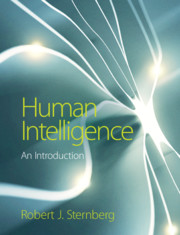Book contents
4 - Psychometric Approaches to Intelligence
from Part II - Approaches to Studying Intelligence
Summary
People have been appraising each other’s capacities for a long time, at least informally. In any society, knowing who is clever, quick-witted, and knowledgeable – and who is not – confers significant advantages as we cultivate friendships, build alliances, compete with rivals, and contend with enemies. In everyday interactions, our appraisals need only be approximately correct rather than rigorously precise. For the same reasons we do not need formal measurements to decide who is trustworthy, loyal, helpful, friendly, courteous, or kind, we do not need intelligence tests – tests of people’s cognitive abilities – to know which of our acquaintances are bright. We can see their intelligence easily enough in their vocabulary, in their humor, in their creativity, and in their achievements (Borkenau & Liebler, 1995; Borkenau, Mauer, Riemann, Spinath, & Angleitner, 2004; J. Kaufman, 2016; Murphy, Hall, & Colvin, 2003). Such outward signs of intellect allow us to judge quickly and with reasonable accuracy if someone is about average in intellect, well above average, or well below. If our appraisals prove to be grossly inaccurate, we can update them as needed.
- Type
- Chapter
- Information
- Human IntelligenceAn Introduction, pp. 67 - 103Publisher: Cambridge University PressPrint publication year: 2019



